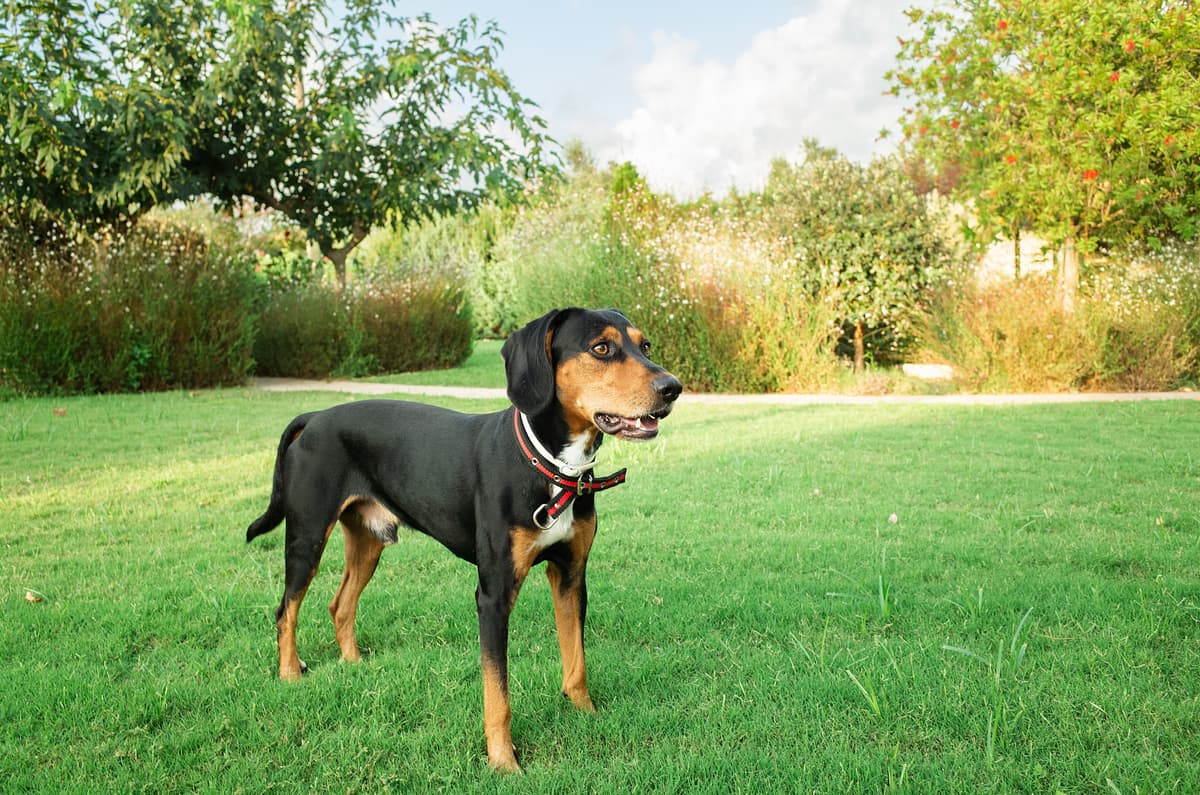Hamilton Hound vs Labrador Retriever
Discover the differences between Hamilton Hound and Labrador Retriever to make the best choice for your situation.
Try different breeds

Hamilton Hound
Energetic and loyal, this breed thrives on outdoor adventures and companionship. Confident yet gentle, it bonds closely with families and loves to explore.

Labrador Retriever
Eager, friendly, and intelligent, this breed loves being part of an active family. Their gentle nature and loyalty make them outstanding companions for all ages.
Quick comparison
Medium
23–27 kg
Short, dense
10–13 years
18–23 kg
High energy
Large
29–36 kg
Short double coat, water-resistant
10–12 years
25–32 kg
High energy
Personality & behavior
Compare the personality traits and behavioral characteristics of both breeds.
Hamilton Hound
Outgoing and sociable with people and dogs
Learns commands and tasks fairly quickly
High stamina and needs daily exercise
Enjoys interactive games and activities
Adjusts to new environments with some support
Labrador Retriever
Warm and sociable with people and animals
Quick learner, responds well to training
High stamina, enjoys active pursuits daily
Loves games and interactive activities
Adjusts easily to new situations and environments
Care needs
Exercise, grooming, and daily care requirements
Hamilton Hound
Hip dysplasia, epilepsy
Labrador Retriever
Hip dysplasia, elbow dysplasia
Suitability
How well each breed fits different living situations and families
Hamilton Hound
Some experience needed
Requires consistent training and patience from less experienced owners
Needs space
High energy and vocal nature not suited for confined spaces
Perfect fit
Thrives in active homes with plenty of exercise and activities
Good companion
Gentle and tolerant, but may be too boisterous for toddlers
Generally compatible
Can live with other pets if socialized early and supervised
Not ideal
Dislikes being left alone and may develop behavioral issues
Labrador Retriever
Great choice
Patient and eager to please, Labradors are manageable for most first-time owners.
Not ideal
Labradors need space and exercise, so apartments can limit their activity needs.
Perfect fit
High energy and stamina make them excellent for active individuals or families.
Highly suitable
Gentle temperament and playful nature make them safe and loving with young children.
Very friendly
Generally sociable and get along well with other dogs and pets.
Prone to anxiety
Extended alone time can lead to boredom and destructive behaviors in this breed.
Breed strengths
What each breed excels at and their best qualities
Hamilton Hound
- Friendly with children and other dogs
- High stamina for long outdoor activities
- Strong scenting and tracking ability
- Generally healthy with few genetic issues
- Adaptable to various living environments
Labrador Retriever
- Friendly and sociable with people and dogs
- Highly trainable and eager to please
- Excellent with children and families
- Strong retrieving and swimming abilities
- Generally adaptable to various living situations
Challenges & considerations
Potential challenges and considerations for each breed
Hamilton Hound
- Prone to chasing small animals instinctively
- Needs frequent physical and mental exercise
- Can be stubborn during training sessions
- May bark frequently if under-stimulated
- Sheds moderately and requires regular grooming
Labrador Retriever
- Prone to obesity without portion control
- Can become destructive if under-exercised
- Heavy seasonal shedding requires regular grooming
- May develop hip or elbow dysplasia
- Needs significant daily physical activity
Ready to choose your perfect breed?
Learn more about each breed or compare other breeds to find the perfect match for your lifestyle.
Discover more helpful tools
Make use of our other free tools to get the most out of your pet experience
